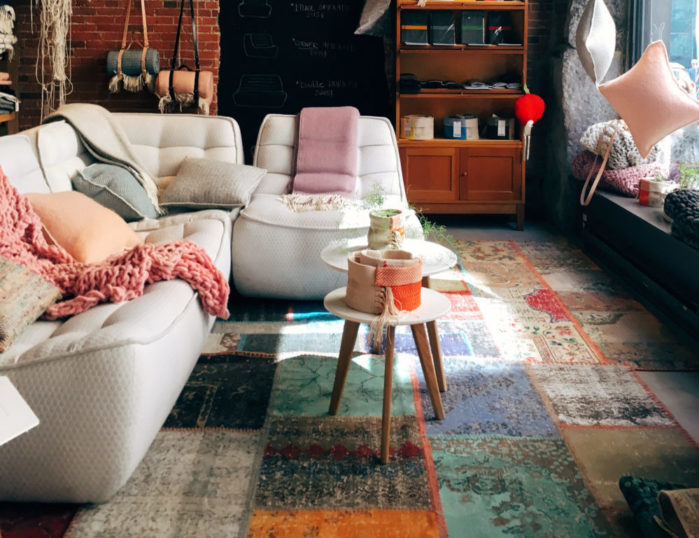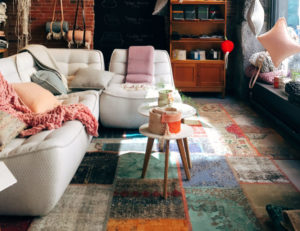
One of the most frequent questions we get at Pet My Carpet, after those involving carpet warranties, synthetic carpets, and how to tell the quality of a carpet, involves the difference between low and high pile carpet, as well as the inevitable “which is better (for me, my family, my kids, my parakeet, three cats, and four golden retrievers…)?” While the answers for your family will depend to some degree on how your home is setup and who lives inside it, there are many general carpet principles that hold constant in most environments. Let’s tackle a bunch of carpet pile questions together.
What exactly is a high pile (or low pile) carpet or rug?
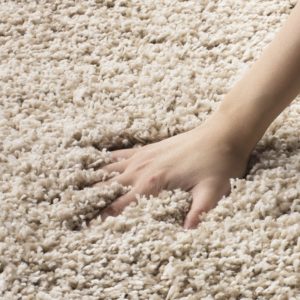
The word “pile” is simply a way of describing the fabric loops that make up carpets. A carpet is a collection of fibers (whether natural or synthetic), and the height and looseness or tightness of these fibers (as well as their softness, color, and overall texture) affect how we perceive them when we step, sit, or lie on them.
High pile carpets are carpets with taller (longer) and looser fibers. If you’ve ever stepped on a frieze or shag carpet (hello ’70s children!), you’re familiar with a high pile carpet; there are other varieties, but that’s one of the most popular. Low pile carpets, in contrast, feature shorter fibers with tighter fabric loops, such as berber and saxony carpets. Most residential and commercial carpets in apartment buildings, houses, and hotels are low pile carpets. While they can be made from a variety of fibers, you’ll most often find high-pile carpets in synthetic options like nylon, polyester, triexta, and olefin.
Why might my family be interested in a high pile carpet or rug?
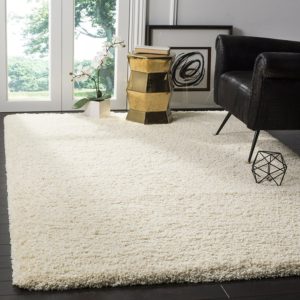
High pile carpets are a good choice for families interested in comfortable and warm carpets. It’s cozy and plush and like walking into a world of comforting memories. If you’ve heard of hygge–the Danish word of comfort and coziness–think of high pile carpets as the embodiment of that word.
Similarly, if you’ve got the kind of family where people enjoy spending time sitting, lying down, or otherwise occupying the carpet space like furniture, you’ll have much more comfort with these kinds of carpets. This is because the comfort of high pile carpets naturally encourages people to spend time touching and using them more intimately than with low pile carpets, which tend to fade into the background in most people’s minds. A high pile carpet, on the other hand, is a more “active” piece of the home, making it a good fit for a family or living room.
Beyond coziness, high pile carpets are also good choices for families who want carpets that stay fluffy without flattening over time. Additionally, many people simply find high pile carpets more luxurious, full, and attractive; they work well in bedrooms where they signal coziness and security.
Why might my family prefer a low pile carpet or rug?
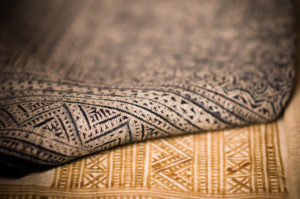
Low pile carpets are good choices for families with medical (i.e., respiratory) concerns or allergy sufferers. The reason behind this is that carpets essentially act as giant air filters within homes, and low pile carpets trap much fewer allergens than high pile ones, which means you won’t need to spend nearly as much time running air filters or vacuuming to get said allergens out of your home. It also means these carpets won’t release millions of allergens each time you walk over them. Low pile vacuums are also far easier for robotic vacuums to handle (e.g., the Roomba 980 or 960). Robotic vacuums, without exception, struggle much more with medium- and high-pile carpets than with low-piles and bare floors. Cordless vacuums will also do far better on low-pile carpeting than any other pile; this is the case even if you spend money on high-end handhelds like the V8 Absolute or Animal.
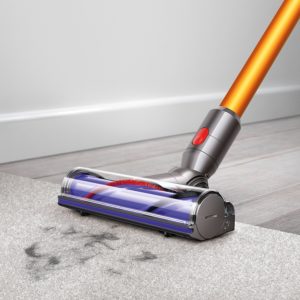
Following the idea of spending less time vacuuming, you’ll also spend less time cleaning a low pile carpet. As a result, if you’re a family that doesn’t like to spend lots of time on home upkeep, the lower maintenance element of low pile carpets may literally free hours of time each week or month from your cleaning routines. This is because low pile carpets are less likely to trap stains and more likely to release them due to having much less surface area.
Finally, if you’re interested in frequently moving furniture (e.g., within a dining room or a playroom), your family will likely be happier with low pile carpeting because they’ll find it much easier to move furniture (e.g., chairs, toys, tables) back and forth than they would with high pile carpeting. Once again, this difference is a result of the smoother surface and reduced surface area of low pile carpets compared to high pile carpets.
What are the pros and cons of low pile carpet?
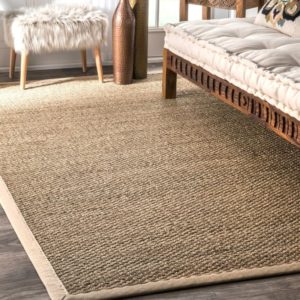
To sum up the points above, low pile carpets are good choices if you’d prefer to spend as little time as possible vacuuming or cleaning your carpets, if you have residents with respiratory or allergy issues, and if you’d like to be able to easily move furniture while maintaining said furniture on carpeted surfaces. Low pile carpets also tend to be significantly cheaper per square foot than high pile carpets, and they’re also more durable due to the shorter fibers, which makes them likely to last significantly longer.
Cons of low pile carpets include reduced aesthetics, warmth, coziness, and comfort compared to high pile carpets; they’re also more likely to flatten over time, and they provide significantly less foot support and insulation.
What are the pros and cons of high pile carpet?
High pile carpets are great choices for individuals or families interested in cultivating a sensation of warmth, comfort, and coziness. They insulate much better than low pile carpets and are good choices for environments where people will frequently sit or lie on the carpets. They are also effective signals of welcome and luxury, depending on how they’re used and how people are encouraged to interact with them.
The cons of high pile carpets include their higher cost, higher maintenance needs (not every vacuum cleaner will be able to clean them, and a number of vacuums can damage them), their tendencies to act as allergen traps, and the level of difficulty they impart on any efforts to move furniture placed on them.
What are the best carpet cleaners for high and low pile carpets?
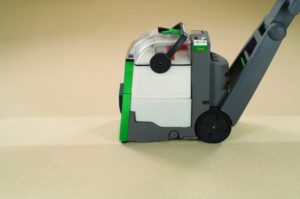
Without question, our favorite carpet cleaner for both high and low pile carpets is the Bissell 86T3 Big Green. It’s a beast, but it’s one of the few carpet cleaners we’ve found equally capable across the wide range of carpets we’ve come across while costing less than $1000. There are very few carpet cleaners on the market with the strength to pull dirt, grime, and all manner of stains from high pile carpets while retaining the finesse necessary to not damage the fibers; this is one of them. We’ve reviewed and compared the Bissell several times and consistently found it to be a carpet cleaner capable of tackling just about any mess without costing more than the carpet itself.
What are the best vacuum cleaners for high and low pile carpets?
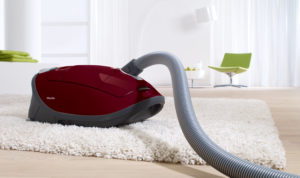
When it comes to vacuum cleaners capable of handling high and low pile carpets, the best we’ve come across so far is the Miele Complete C3 Soft Carpet. We use it on the low setting and have had success with every high pile carpet we’ve thrown at it so far (including tall shags like the Karastan or Mohawk SmartStrand). It also works fabulously with low pile carpets thanks to the adjustable power settings, as we’ve noted in our reviews here, here, and here.
![]() You can buy the Bissell 85T3 Big Green carpet cleaner here on Amazon. You can buy the Miele Complete C3 Soft Carpet here.
You can buy the Bissell 85T3 Big Green carpet cleaner here on Amazon. You can buy the Miele Complete C3 Soft Carpet here.
![]() Canadians can buy the Miele Soft Carpet here and the Bissell Big Green here.
Canadians can buy the Miele Soft Carpet here and the Bissell Big Green here.
 If you find our research on PMC helpful, you can follow our efforts to keep maniacally reviewing home cleaning tools by shopping through our links above. We promise to keep fighting the good fight against every horror children, animals, and grown, yet messy humans can inflict upon a clean home.
If you find our research on PMC helpful, you can follow our efforts to keep maniacally reviewing home cleaning tools by shopping through our links above. We promise to keep fighting the good fight against every horror children, animals, and grown, yet messy humans can inflict upon a clean home.

